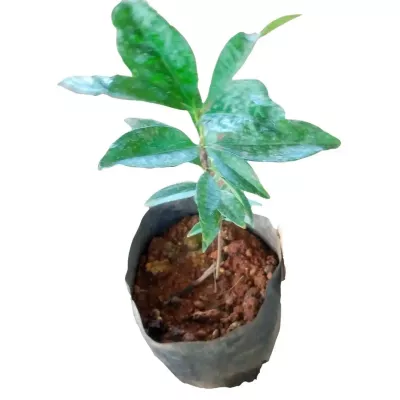



Grumichama is a slow-growing tree with shiny attractive foliage and shape. Apart from the delicious fruit it produce, the wood of the tree is hard and heavy and used for furniture works.

Pay using UPI, Card or Netbanking

Shipping within 3 working days
Grumichama is native to coastal areas of southeast Brazil. It belongs to the Myrtaceae family and is hence related to Pitomba and Jabuticaba.
Grumichama, though called a cherry, is not a cherry belonging to the Prunus genus, despite the similar appearance of the fruit.
Grumichama is a slow-growing tree with shiny, attractive foliage and a distinctive shape. It could then be used as an ornamental plant in landscaping.
The tree can reach a height of 30 feet and has an upright growth habit. It prefers a warm, humid climate with well-draining, organic-rich soil. The tree requires full sunlight to thrive but can manage with liht shade too. It must be watered on a regular basis.
Grumichama prefers neutral or slightly acidic soil.
Grumichama is generally thought to be low-maintenance, and pruning is rarely required. It can, however, be grown in a container with regular pruning to keep its size manageable. The tree matures and starts bearing fruit in about 4 to 5 years. Plants from vegetative propagation methods mature in 2-3 years. The grumichama fruit 30 days after flowering.
Grumichama fruit is a small, round berry about the size of a cherry. Grumichama, has a plum-like flavour. It has thin, dark purple skin and juicy, sweet, and slightly tart flesh.
Despite its small size, it contains many nutrients, including calcium and phosphorus minerals, and vitamin C, Antioxidants are abundant in the skin.
Data sheet